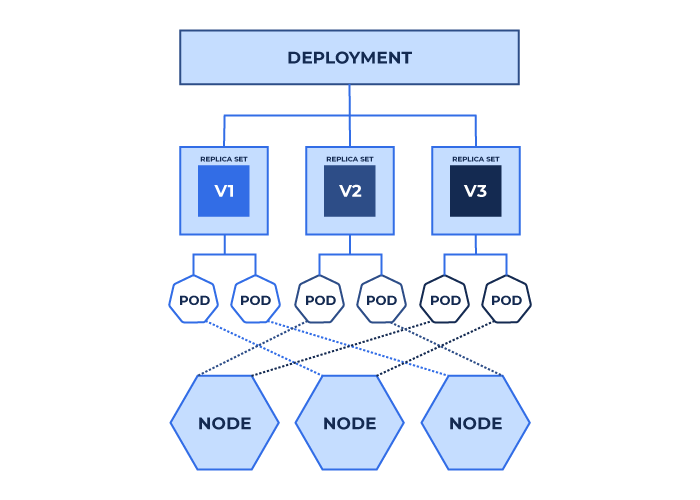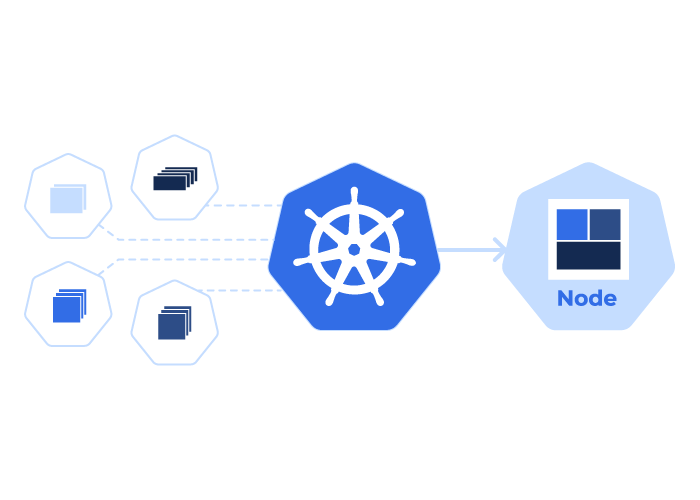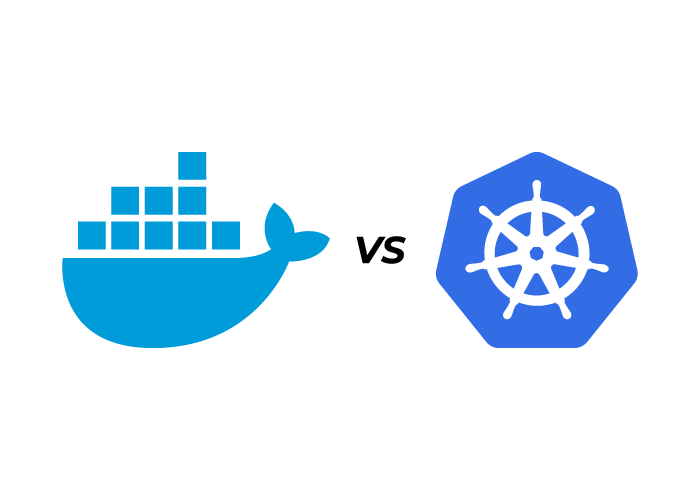What is Kubernetes?
If you’re browsing the article titled ” What is Kubernetes, ” you’ve never heard of Kubernetes before and are curious to know more about it. The purpose of these resources is to introduce you to Kubernetes and inform you about the benefits and uses of Kubernetes, as well as the features it offers to its users, the definitions of Kubernetes, and the difference between Docker and Kubernetes.
While we look back at the history of IT, we can see the route of advancement well understood when discussing Kubernetes. There are now several open source solutions for managing containers, including Kubernetes (k8s), which was also introduced as one of these platforms.
The Kubernetes open source system is designed to manage container applications, which is a product of the well-known and well-known company Google. Therefore, with other options for managing containers, it quickly became popular among developers and is used by the world’s largest companies. It has also emerged as a model of success in the open source world. Every day, more users are being added to Kubernetes; as a result, increased interaction will positively affect the performance of Kubernetes.
This article will go through all of Kubernetes’ features and applications in detail.
The tale of Kubernetes
The expansion of cloud computing in technology created new needs in the world of software and hardware, and we are looking for a new generation of technology to make interacting with cloud computing easier, and we have also seen applications moving towards modularization to make it easier for developers to manage and interact with applications.
In this circumstance, Google, which is one of the largest and most famous advances and technology companies, unveiled the Kubernetes open source project, which has an infrastructure built on containers, in 2014, which was founded by Joe Bed Brendan Burns and Craig McLuckie. In other words, Kubernetes is a product of Google Cloud that was first built and introduced by Google employees. This project is the result of 15 years of Google container workload implementation and open source community collaboration, which is modeled after Google’s internal cluster management system called Borg. It plays an important role in facilitating the deployment and management of your applications.
It is interesting to know that Google’s internal platform, which is known as Brog, deploys and supports more than 2 billion containers every week, and in Google, many important services such as Google’s search engine and Gmail were run based on Brog; Also, by opening the source of this project, Google made it possible to cooperate with other famous companies to expand and improve the Kubernetes project.
Kubernetes quickly became popular in the tech community thanks to its open-source nature. They became a strong competitor to other container management options such as Apache Mesos and Docker Swarm.
Also, Red Hat was one of the first companies that cooperated with Google before the development of Kubernetes and was one of the investors who has been leading the Kubernetes upstream project; in addition to RedHat, thousands of developers with commercial and personal goals are trying to develop and optimize Kubernetes.
But now, Google no longer supports the Kubernetes project, and in 2015 the project was donated to the newly founded CNCF Native Cloud Computing Foundation.
Interesting point: Kubernetes’ logo features seven spokes, which is a reference to the original name of the project, Project Seven of Nine.
A description of Kubernetes
In simpler terms, Kubernetes is responsible for running and managing different containers on different servers in databases; Different containers in Kubernetes, which contain a common application, are grouped independently and separately as Pods, which makes it easier to identify and manage them.
As a result, all businesses that run different services need containers and Kubernetes to perform their tasks to use containers to separate programs and make it easier to produce and test services and programs with the help of containers. They also provide the implementation of applications in a shared infrastructure.
Kubernetes also plays a role in the automatic execution and management of Linux containers. Like an operating system that can run on multiple servers in an integrated manner, it can interact with the desired applications and services without worrying about the state of different machines.
As a result, it becomes easier to run and manage all programs on server computers by Kubernetes. All programs are run in Kubernetes containers so that they can be separated from each other and have a simpler development and deployment process.
By accepting the prevalence of containers in organizations, Kubernetes is used as a container-centric management software to run and deploy containerized applications. Kubernetes, also known as k8s (K8s refers to the 8 characters between the first letter of Kubernetes and the last letter “K” and “s”) or “Kube.” This is an open-source, expandable, and portable platform for managing and organizing container services and workloads. It streamlines and automates the manual process of administering, deploying, and scaling container applications.

In a computer or data center, if any part of the software operates in any way it wants to, we will see many disturbances and irregularities. Linux and other base operating systems have considered container orchestration to avoid the potential chaos to provide greater coordination by combining individual containers into a cohesive whole.
As an orchestration layer, Kubernetes enables the efficient execution of workloads using containers. The ability to automatically orchestrate containers has positively impacted the speed of daily operations, improving reliability and reducing operational resources.
Kubernetes plays an important role in facilitating application management by automating the operational tasks of container management, which include making changes to applications, scaling applications according to needs, internal commands for application deployment and application control, and more.
Today, Kubernetes is considered as a real open source community, which was developed with the cooperation of Google, RedHat, and other famous companies.
How Kubernetes works
When applications use multiple containers distributed across various servers for Development, their management and operations become complicated. Kubernetes provides an open-source API to govern how and where these containers run to handle this complexity.
Kubernetes, a coordination mechanism among virtual machine clusters, schedules containers based on available computing resources and the resources required by each container. Pods, Kubernetes’ fundamental operational unit, organizes containers into groups that can be scaled to match your requirements.
Kubernetes automatically handles tasks such as managing service discovery, balancing workloads, checking the health of individual resources and containers, scaling based on compute usage, and allowing containers to automatically replicate or restart when needed, known as Kubernetes self-healing.
What are the reasons we need Kubernetes? And what are its uses?
Kubernetes is the main pillar of the cloud-native world; its importance and value can be seen in the extent of its ecosystem in IT organizations; in other words, the power of open-source cloud-native ecosystems owes to projects like Kubernetes.
As we explained, Kubernetes was created to facilitate the tasks of containers because every organization requires the use of containers to run and organize their applications. Also, launching container programs is a challenging task due to having many containers installed on different machines, and the containers that run the program also need to be managed and monitored, which is not an easy task; Undoubtedly, every user welcomes a system that can automatically monitor and manage containers.
Kubernetes was created with the same purpose to provide deployment patterns, a framework for the flexible implementation of distributed systems, and to protect against program errors and their scaling. In addition, it can manage the life cycle of containers and be involved in their scalability as desired; Also, Kubernetes is used to run applications based on containers for their development and scalability.
Kubernetes can easily recognize a container using its DNS name or service IP address and balance the container load if there is a lot of traffic. It can also distribute network traffic to establish stability.
Installing any storage system, from public cloud providers to local storage, is possible with Kubernetes storage orchestration.
In Kubernetes, rollouts and rollbacks can be done automatically. With Kubernetes, you can specify the desired state of your deployed containers, and it will make incremental changes to deploy new containers. For example, automation of deploying new containers, removing old containers, and migrating resources from old to new is possible using Kubernetes.

Packing bins in Kubernetes to run container tasks automatically requires a group of nodes whose CPU and RAM requirements of the container are specified in Kubernetes; To maximize your resources, Kubernetes can place containers on your nodes.
Kubernetes’ self-healing feature is very efficient; for example, it replaces or restarts a container If it is damaged and destroys a container if it doesn’t respond to a user-defined health check.
Secret management and Kubernetes configuration leaves no room to worry about sensitive information such as OAuth tokens and SSH keys or passwords because it manages and stores this important information.
You can distribute and change secrets and application settings without rebuilding your container images or exposing your stack configuration’s secrets.
Kubernetes is not ineffective in reducing the burden of managing, monitoring, configuring, and deploying large-scale container applications, and plays an important role in managing container lifecycles and related applications such as load balancing and high availability.
When running on container applications, Kubernetes can easily make container applications portable because these applications are separated from their infrastructure. That is, you can transfer these programs from local machines to production in internal and multiple cloud environments while maintaining stability between environments; As a result, you can easily make workloads portable.
As we mentioned, by defining complex container applications and deploying them in one or more server clusters, Kubernetes enables the scaling of containers in the desired way and automatically protects containers, and It ensures their health through regular control.
Kubernetes is also used in application development because it has an open source and active community that is constantly working to improve the security, monitoring, and management of the Kubernetes platform.
Advantages of Kubernetes
This platform is used by a lot of people for many different reasons. Undoubtedly, it provides capabilities that gain the trust of experts in the world of information technology and significantly facilitate the activities process. Next, we present its most important advantage:
Portability of containers: it is possible to move containers by Kubernetes; you can run and manage container programs in any environment, from virtual machines to bare metal by Kubernetes, which benefits from this feature thanks to the support of all public cloud providers.
Kubernetes extensibility and integration: a wide community of experts supporting Kubernetes is trying to enrich and rapidly grow this ecosystem to enable the development of applications and services such as monitoring, management, problem checking, and alerts by adding capabilities.
As a result, Kubernetes has gained popularity among developers with its continuous development, attractive design, and active community in automating the coordination of containers and the possibility of providing and maintaining software at the desired scale.
Affordability: Your IT budget is in your hands thanks to Kubernetes’ inherent resource optimization, automated scalability, and ability to execute workloads wherever they add the most value.
IP-based: The REST API is at the heart of Kubernetes, enabling Kubernetes to control anything programmatically.
Simplifying CI/CD: Automating the development, testing, and deployment of applications in production settings is the goal of the DevOps methodology through CI/CD. Enterprises use Kubernetes and CI/CD to build scalable CI/CD pipelines that dynamically respond to load.
Determining how programs interact and their performance: Sometimes, Kubernetes covers thousands of containers, which is practically impossible to interact with such a volume of containers without having solutions like Kubernetes. Leveraging Elasticity, Kubernetes allows for rolling updates and moving traffic between multiple applications to test new features or roll back failed deployments.
Building a multi-cloud environment with Kubernetes: Organizations wishing to build multi-cloud systems are now turning to Kubernetes as a top choice. Kubernetes is adopted by all public cloud providers, including AWS Elastic Container Service for Kubernetes, Google Kubernetes Engine, and Microsoft Azure Kubernetes Service, all of which offer their own distributions.
Increasing the speed in the development process: Kubernetes in companies has provided a suitable platform for simplifying the design, implementation, and launch of applications in the cloud space, and also with its capabilities, it has added the possibility of publishing applications on various platforms, which in The speed of developing applications and improving the work process of developers has had a positive effect.
Providing efficient capabilities for developers: Kubernetes makes developers’ tasks as easy as possible by offering features such as service detection, load balancing, health checks, the possibility of replicating applications, and configuration management to create systems that include Microservice Architecture technology.
What is Container Orchestration?
Container Orchestration plays a role in automating the execution of containerized workloads and services, which are critical to the lifecycle of Kubernetes containers, including provisioning, deployment, scaling, networking, and load balancing.
What is the secret of Kubernetes?
The internal security features of the container orchestration platform are provided by the Kubernetes secret, which is an intelligent object called Kubernetes. Important information such as an OAuth token or SSH key can be stored in a “Secret” in Kubernetes so that it can be accessed by pods in your cluster when needed but kept out of the hands of other pods in your cluster to avoid potential risks.
As a result, storing sensitive information in Secret is much safer and more flexible than storing it in Pods and containers. Secrets are used to respond to technical needs and control possible disruptions arising from those needs. It should be noted that Secret is responsible for providing the data required by your applications, while there is no need to grant unlimited access to those who manage the applications.
What is a Kubernetes cluster?
Cluster means a group and set of nodes that run container programs, so by benefiting from Kubernetes, you will be responsible for managing the cluster and the programs inside it.
What is a Kubernetes pod?
A pod is the smallest deployable part of the Kubernetes ecosystem. A single pod represents multiple containers running simultaneously on your cluster.
What is a Kubernetes node?
The physical or virtual machines that make up the nodes in your cluster contain the container runtime and other important services needed to run your application containers. For example, Github’s Kubernetes repository has a prominent example of a node.
Kubernetes vs. Docker
The names Docker and Kubernetes are usually heard together because these two platforms are used in combination to manage containers. Because of this, developers may be unable to distinguish the difference between these two platforms.
To understand the difference between them, one must know the function and duties of each. Docker is naturally more popular due to its long history in the market. Still, it has weaknesses in the field of cluster management, which has turned Kubernetes into a more powerful platform.
Docker is software that creates container applications; Using Docker or other tools, K8s automatically run containerized and cloud-native applications. K8s uses the various Docker tools available in the engine of Docker, especially the secure Docker framework, which is considered one of its premium features in managing and implementing containers.
As a result, most businesses benefit from the integration of Docker and Kubernetes; these two platforms have differences in providing features, and choosing the most suitable platform between Docker and K8s for each person will be according to the needs of that group, but K8s benefits from Its modularity and high power is the choice of the majority of developers.

FAQ
What is Kubernetes' primary advantage?
For the most part, five important advantages may be identified: shorter development and release cycles, lower IT expenses, greater software scalability and availability, multi-cloud adaptability, and portability to other clouds.
What is a service in Kubernetes, and how does it work?
Kubernetes service is an abstract way to display the execution of a program on a group of pods as a network service. By using a DNS domain for a group of pods, Kubernetes can balance them. Due to the short lifetime of Pods, services help pods keep track of which IP to connect to.
Can a pod run a certain number of containers?
In a Pod, each container can run on a shared node; thus, you cannot stop or restart individual containers. The recommended practice is to run one container in a pod, with extra containers used for things like an Istio network proxy sidecar.
What are the types of nodes in Kubernetes?
1. The Kubernetes Master node runs the Kubernetes control panel and monitors the entire cluster. Each cluster needs at least one master node.
2. Worker nodes: These nodes are responsible for running container workloads.
Conclusion
Kubernetes, a 15-year-old open source software platform, is widely regarded as one of the best in the open source industry. Google’s Borg project has produced a valued product that is now the preferred choice of numerous small and large organizations.
In the not-too-distant future, it is envisaged that this effective platform will witness upgrades and an increase in users, and it will be able to keep its place as one of the successful examples of open source.
As we explained, the Linux operating system is one of the platforms that covers containers and the orchestration of containers to prevent any possible disruptions and irregularities. Thus it can support Kubernetes well. Therefore, buying a Linux VPS is the best suggestion if you want Kubernetes to perform efficiently in managing and running containers on servers.
We’d love to hear about your Kubernetes experiences; share your experiences with us in the comments section.
It was a pleasure having you with us to the finish.